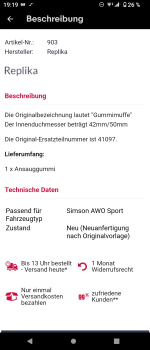It depends on your use case. I had a really nice 8x30 back in the 90s and was on a birding trip to Mexico. We came out of a cloud forest into the sun and my bins were completely useless for the next 15 minutes while they de-fogged. I missed out on several species as a result. On return from that trip I bought a pair of Swarovski 8x30 SLC Mark II. Never again will I use binoculars that are not waterproof/fogproof.
That said, why AREN'T they waterproof/fogproof? Seems like that is a pretty freaking easy engineering problem to solve.
Zedster,
I agree, it depends on your needs.
I will quote from Tobias Meenie's review of the Nikon 8x32 SE where he addresses the same issue:
Cons
It is not waterproof
I would not worry about this, though. I generally do not use binoculars in pouring rain, why should I? The bears and birds hide in the bushes, the marmots underground.
Although Tobias is a wildlife photographer/videographer, I would imagine that his work doesn't take him to Tropical climates, so like me, he doesn't see the SE/E2's non-WPing as engieering problem to be solved. However, I moved last year to a mountain valley that's damp because its near water (three smaller streams combine into one Big Spring (its name) about two blocks from the house, so I do find myself using my roofs more often than I did at the house where I lived before, which was located at a 1,000 ft. elevation. I didn't limit myself to the immediate area (except during the pandemic), but the other birding areas I went to such as a local wild preserve and state parks, all of which I could use my non-WP porros since like Tobias I don't go birding in the rain.
So, for fair weather birders and those who and those who don't take birding trips to humid climates, the E2 or SE will work fine and provide an optical quality that would cost multiple times more to match with top roof prism binoculars.
I also like the 3-D view of porro prism binoculars. While the 8x42 EDG's optics are superb overall, the distant view looks compressed and 2-D compared to the SE and E2, and even somewhat compared to the Cabela 8x32 Guide roof. For close-up birding that's not an issue, but I like looking at the environment I'm birding in, and I find the 3-D porro view more natural looking in that regard. I also like to look at architecture, particularly historical architecture, with my binoculars and porros preserve the 3-D perspective of the buildings better than roofs.
I'm not sure about the engineering problem regarding WP/FP porros. The Habicht 8x30 W's focuser is reportedly a lot harder to turn than the SE or E2, which is due to it being WP/Fogproof. Tobias sent it to Swarovski to loosen up the focuser, but in doing so, it made the Habicht less watertight. He doesn't care about the WPing, it's the Habicht's high resolution, 95% light transmission, and natural colors that make it his reference standard.
Minox and Leupold have made WP/FP porros (BP and Cascades) with internal focusers like roofs, which solves the hard turning external focuser issue, but they both had a restricted FOV (6.4*). So, it might be an engineering challenge to design a wide field porro such as the E2 with an internal focuser.







